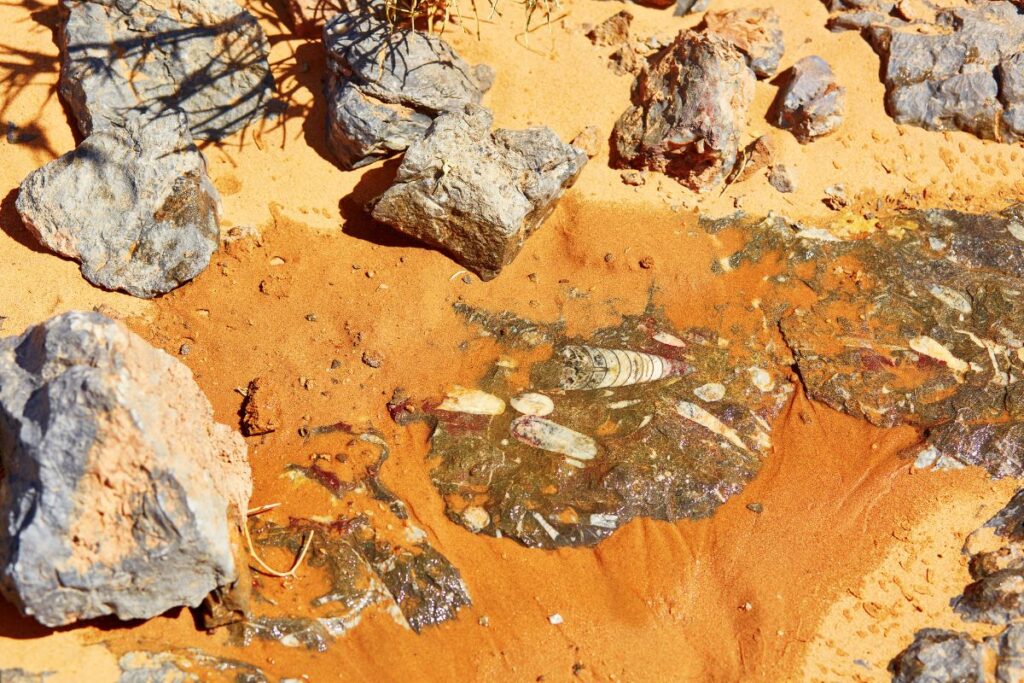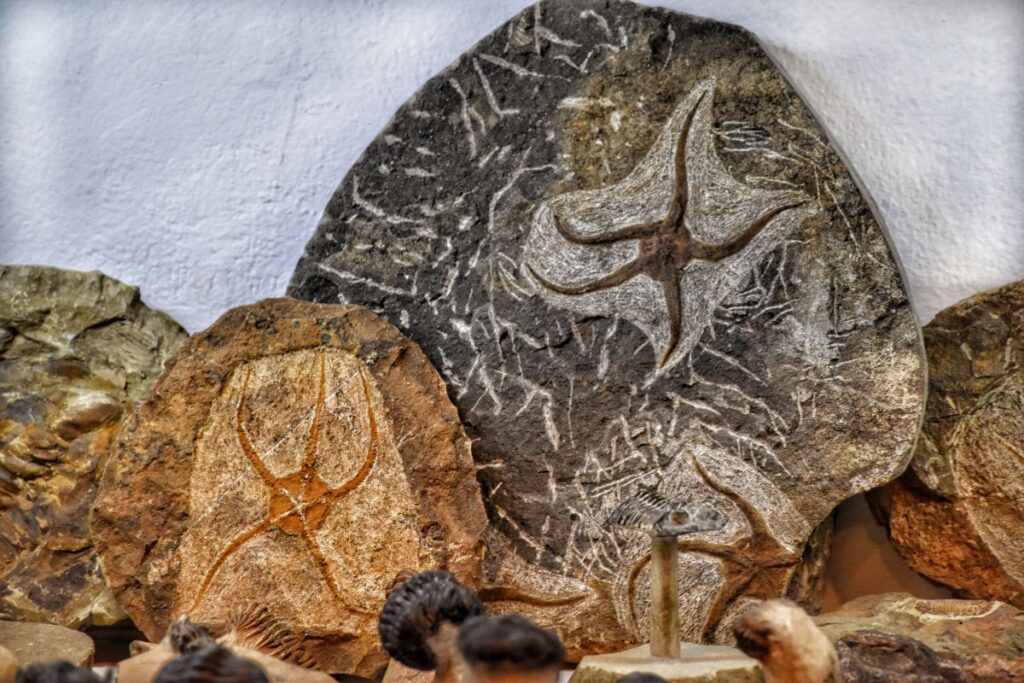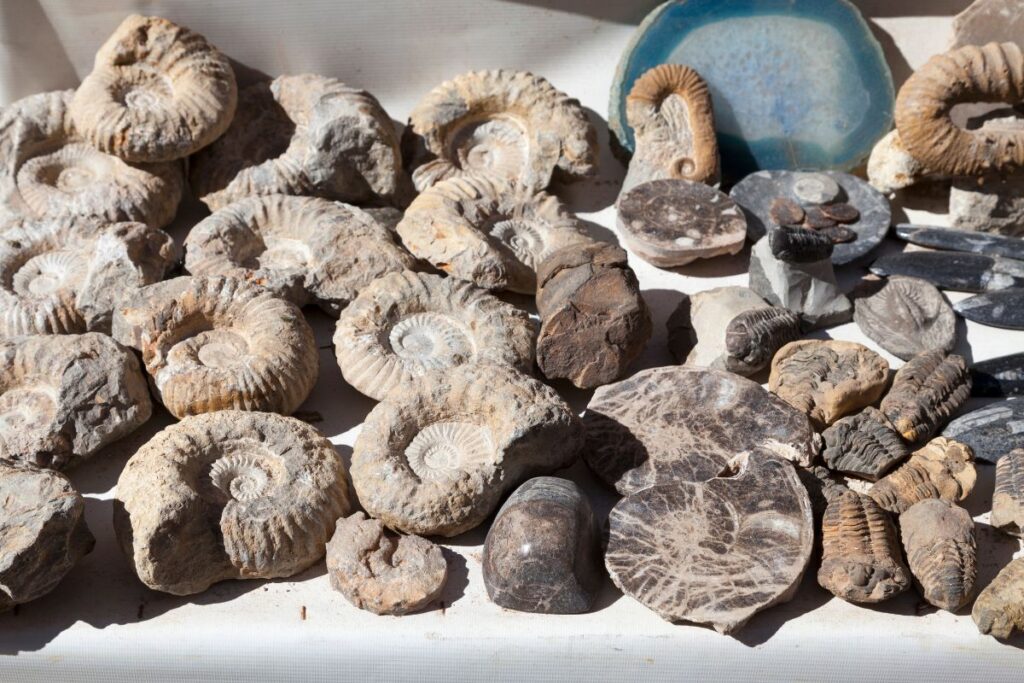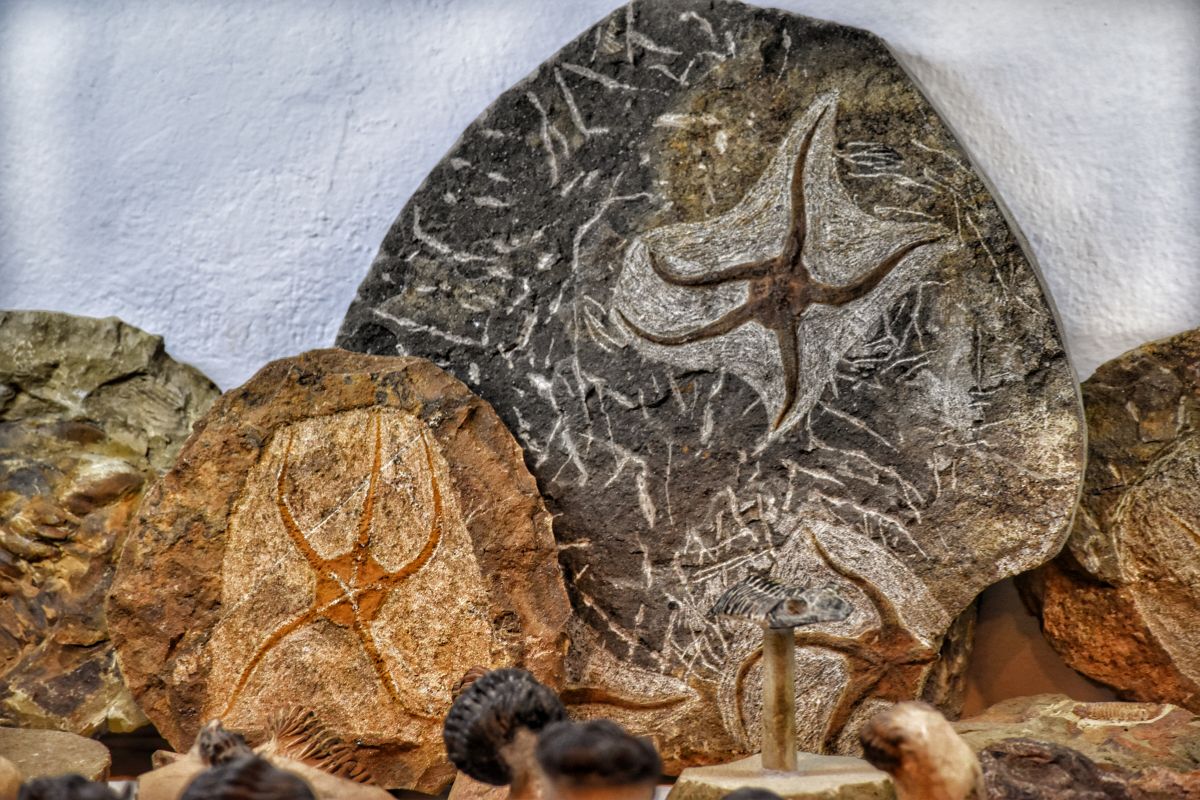Morocco, known for its rich cultural heritage and stunning landscapes, has also gained recognition as a treasure trove of prehistoric fossils. From ancient marine creatures to early terrestrial mammals, the Moroccan fossil record provides a fascinating glimpse into the biodiversity of the past. In this article, we will embark on a journey through time, exploring the diverse and extraordinary fossil discoveries that have emerged from the sands of Morocco.
Geological History of Morocco
Before we delve into the world of Moroccan fossils, it’s essential to understand the geological history that has shaped the landscape of this North African nation. Morocco’s geological story dates back millions of years and involves a complex interplay of tectonic forces, shifting continents, and climatic changes.
During the Paleozoic Era (around 541 to 252 million years ago), Morocco was submerged under a shallow sea. This marine environment laid the foundation for preserving ancient marine life, leaving behind a rich fossil record of trilobites, ammonites, and other marine creatures.
As time marched on, Morocco’s geography evolved. During the Mesozoic Era (around 252 to 66 million years ago), the region witnessed the emergence of dinosaurs, including the famous theropod Spinosaurus. Fast forward to the Cenozoic Era (around 66 million years ago to the present), and Morocco’s landscape transformed further, giving rise to a diverse array of mammals, including early primates and ancestral elephants.



The Moroccan Fossils Treasures
- Prehistoric Fish and Marine Life: The Moroccan Sahara is a veritable repository of prehistoric marine fossils. In the region of Erfoud and the Kem Kem Beds, fossil hunters have uncovered an array of ancient fish species, including gigantic coelacanths and predatory marine reptiles like ichthyosaurs and plesiosaurs. These fossils provide vital insights into the evolution of aquatic life during the Late Cretaceous period.
- Dinosaurs of the Sahara: Morocco has yielded remarkable dinosaur fossils, making it a pivotal location for paleontological research. The discovery of Spinosaurus, a massive carnivorous dinosaur that likely spent much of its life in the water, captured international attention. Other dinosaur species found in Morocco include long-necked sauropods and theropods like Carcharodontosaurus.
- Prehistoric Sharks: The phosphate mines of Morocco have unveiled an exceptional fossil record of prehistoric sharks. These ancient shark species include the famous Otodus megalodon, one of the largest predatory sharks ever to exist, as well as various extinct relatives of modern-day sharks.
- Early Mammals and Primate Ancestors: Morocco’s fossil deposits have also revealed the evolutionary history of mammals. Fossils of early primates, some dating back to the Eocene epoch, provide valuable insights into the origins of our own lineage. Additionally, Morocco has produced fossils of ancient elephant relatives, such as the bizarre Deinotherium.
- Ammonites and Trilobites: Morocco’s Paleozoic and Mesozoic rock formations contain an abundance of ammonites and trilobites, both iconic groups of marine creatures. These beautifully preserved fossils offer a window into the ancient seas that once covered Morocco.
The Significance of Moroccan Fossils
Moroccan fossils hold immense scientific significance for several reasons:
- Evolutionary Insights: The diverse range of fossils found in Morocco helps paleontologists piece together the evolutionary history of various organisms, from dinosaurs to early mammals. These findings contribute to our understanding of how life on Earth has evolved over millions of years.
- Climate and Environmental Change: Fossils provide crucial data on past climates and environmental conditions. By examining the types of plants and animals that lived in Morocco during different time periods, scientists can reconstruct ancient ecosystems and track changes in climate and habitat.
- Global Collaboration: The study of Moroccan fossils fosters international collaboration among paleontologists, geologists, and other scientists. Researchers from around the world converge on Morocco to study these fossils, leading to a broader understanding of Earth’s history.
Conservation and Challenges
While Moroccan fossils provide invaluable insights into prehistoric biodiversity, they also face certain challenges:
- Fossil Poaching: The high value placed on Moroccan fossils in the global market has led to illegal fossil poaching and smuggling. Efforts are underway to combat this issue and ensure that important specimens remain in Morocco for study and education.
- Habitat Preservation: Some fossil-rich areas in Morocco are threatened by habitat destruction due to mining and development. Balancing the preservation of fossil sites with economic interests is an ongoing challenge.
- Scientific Resources: Moroccan institutions and researchers face resource constraints, making it essential to foster international partnerships and support for fossil research and conservation efforts.
Morocco’s fossils offer a captivating window into the Earth’s distant past. From the depths of ancient seas to the sprawling landscapes inhabited by dinosaurs and early mammals, these fossils provide a rare glimpse into the biodiversity that once thrived on our planet. As the world continues to unravel the secrets held within Morocco’s fossil beds, we gain a deeper understanding of the evolutionary tapestry that has shaped life on Earth. Preserving these treasures and studying them for generations to come is a shared responsibility, one that promises to unlock many more chapters in the story of life on our planet.
Secure Your Adventure: Book Now for the Ultimate Moroccan Tour!
Book now and start the best tour with us! Discover the wonders of Morocco with our expertly crafted itineraries, tailored to provide an unforgettable experience. From breathtaking landscapes to rich cultural heritage, our tours offer the perfect blend of adventure and relaxation. Don’t wait – secure your spot today and embark on the journey of a lifetime!
